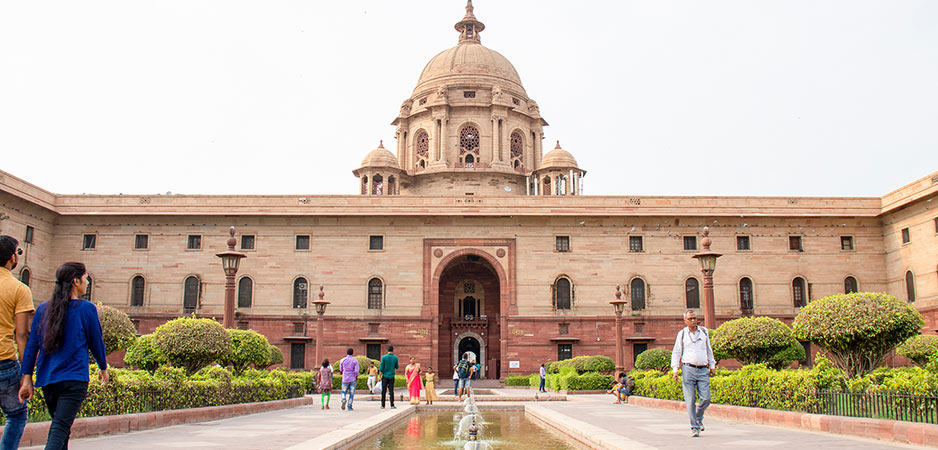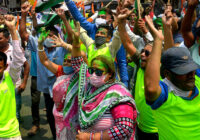Indian Prime Minister Narendra Modi surprisingly participated in the virtual Non-Aligned Movement (NAM) summit in May for the first time since he took office in 2014. Modi had skipped the 2016 and 2019 NAM summits, but his attendance in 2020 could signal a revival of this once-important alliance.
The NAM, a Cold War-era grouping of nations of which India was a founding member, originated in 1961, when anti-colonialist developing nations had little choice but to align with either the United States or the Soviet Union. For many countries like India, this choice was a non-starter. A recently independent and underdeveloped India could not afford to get embroiled in great power politics. Instead, Jawaharlal Nehru chose a pragmatic third path and, along with Egypt’s Gamal Abdel Nasser and then Yugoslavia’s Josip Broz Tito, pioneered NAM to give voice and space to nations at similar junctures. This normative posturing made sense at the time even from a realist perspective.
Timing
But with the fall of the Soviet Union, NAM struggled for relevance in a unipolar world. Free from the Cold War shackles, nations could pursue policies based on their own interests. Ever since, NAM has maintained a purposeless existence, with many of its members far from being non-aligned and, in fact, explicitly aligned in one way or another. Forever trying to differentiate himself from his idealistic predecessor, Nehru, of India’s main opposition Congress party, Modi fashioned himself as a foreign policy pragmatist and moved away from an irrelevant NAM.
It is not surprising then that Modi’s participation in the summit polarized reactions at home. Shekhar Gupta, writing for The Print, refers to NAM in today’s context as “a class of losers” and points at India as an openly declared strategic ally of the United States and part of several security groupings that include American participation, such as the Quadrilateral Security Dialogue. Terms like “fence-sitter” are often hurled at India’s foreign policy based on its penchant to play it safe rather than adopt explicit stances. But as India’s former foreign secretary, Vijay Gokhale, declared during the 2019 Raisina Dialogue, “India has moved on from its non-aligned past. India is today an aligned state.”
After Six Years in Office, Modi’s House of Cards Shakes at the Foundations
What then explains New Delhi’s sudden return to NAM? Timing. A new Cold War has emerged amidst the COVID-19 pandemic, with China and the United States engulfed in a bitter tussle, emboldening middle powers such as India, the European Union, Japan, South Korea and Australia to navigate between the major world powers. As Kings College London Professor Harsh Pant, who is also head of the Observer Research Foundation’s Strategic Studies program, states, the friction between the US and China “has opened up space for middle powers to show that they can provide stability.”
Sensing a global leadership vacuum, India massively stepped up its diplomatic act and adopted an approach of global solidarity and cooperation, leading virtual summits with regional and multilateral groupings, sending consignments of drugs to over 120 countries and evacuating stranded nationals of neighboring countries. Amid a shake-up of the current global order and diminishing international cooperation, New Delhi sees an opportunity in shaping an emerging world order and its institutions, and it wants its voice to be heard loud and clear.
In his NAM address, Modi reiterated “the limitations of the existing international order, and the need for a new template of globalization based on fairness, equality and humanity.” Modi’s words reflect a greater ambition guided by a pragmatic recognition that the world is changing.
Engagement
In recent months, India’s international image has suffered on account of its controversial revocation of Article 370 in Kashmir, nationwide protests against the Citizenship Amendment Act that culminated in the deadly Delhi riots coinciding with US President Donald Trump’s visit in February, and India’s recent spat with the Gulf nations. Using all available global platforms instrumentally in this time of tectonic changes and emerging realities makes a certain sense.
This will aid in the pursuit of India’s interests by mobilizing support for India’s positions, reviving its positive image, highlighting regional concerns and reaching a wider audience. In fact, as Aditya Raj Kaul discusses in The Quint, given Pakistan’s serious provocations in Kashmir amidst the COVID-19 crisis, Modi drew attention to Pakistan’s habit for terrorism, likening it to a deadly virus during the virtual NAM summit.
While engagement with major powers remains a priority, there is no harm in leveraging avenues where India has generated considerable goodwill. Middle powers and smaller nations are gaining importance by playing a balancing role during the pandemic. Amidst a global backlash against China and a resurgence of India-China border skirmishes lies an opportune moment for New Delhi. Even with an outdated philosophy, the NAM — with 120 member states, the world’s largest grouping after the UN — can serve as a useful platform to amplify India’s voice, influence and global engagement. As Professor Manjari Chatterjee Miller, of Boston University, states, “nonalignment was never a monolithic ideology” but one “interpreted in different ways by successive leaders.” It seems that Modi has also acted on his own interpretations of it.
The challenge for India is to reorient and steer the NAM’s course to factor in current realities. In an article for The Wire, Arun Sukumar argues that the NAM could be reimagined in terms of economic non-alignment or neutrality in the wake of global dependence on China. He also highlights how NAM summits have often looked into issues of international law, such as addressing the South China Sea dispute. Against the backdrop of the India-China rivalry, Sukumar’s suggestions have strong resonance, as backing from NAM nations could boost India’s influence in its multilateral relationships and setting the global agenda.
Whether the Indian government is guided by a similar rationale, or whether Modi’s attendance at the summit was only an ad hoc means to project the Indian prime minister as a progressive globalist and set him apart from other rightwing populist leaders, remains to be seen. Ultimately, India’s foreign policy successes are contingent not on attending summits for the sake of attending, but in making conscious choices and pursuing them with a consistent and long-term vision.
*[Young Professionals in Foreign Policy is a partner institution of Fair Observer. UPDATED: June 6, 2020, at 19:00 GMT.]
The views expressed in this article are the author’s own and do not necessarily reflect Fair Observer’s editorial policy.
Support Fair Observer
We rely on your support for our independence, diversity and quality.
For more than 10 years, Fair Observer has been free, fair and independent. No billionaire owns us, no advertisers control us. We are a reader-supported nonprofit. Unlike many other publications, we keep our content free for readers regardless of where they live or whether they can afford to pay. We have no paywalls and no ads.
In the post-truth era of fake news, echo chambers and filter bubbles, we publish a plurality of perspectives from around the world. Anyone can publish with us, but everyone goes through a rigorous editorial process. So, you get fact-checked, well-reasoned content instead of noise.
We publish 2,500+ voices from 90+ countries. We also conduct education and training programs
on subjects ranging from digital media and journalism to writing and critical thinking. This
doesn’t come cheap. Servers, editors, trainers and web developers cost
money.
Please consider supporting us on a regular basis as a recurring donor or a
sustaining member.
Will you support FO’s journalism?
We rely on your support for our independence, diversity and quality.






